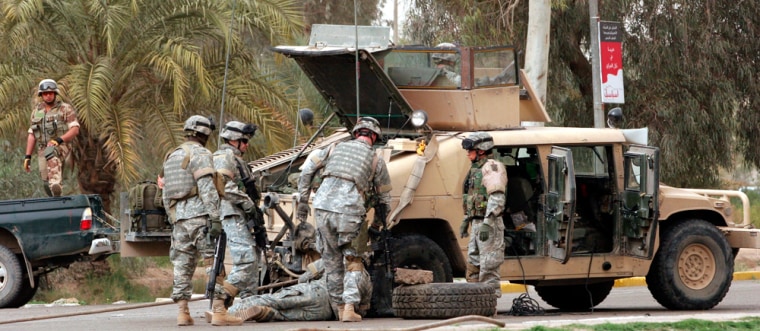The law of unintended consequences is a very fickle companion.
Occasionally, it will deliver some kind of bonus we didn’t anticipate, like the inexpensive efficiencies provided to our everyday lives by the expensive technological requirements of the space program.
Most of the time, however, the unintended news is bad. And it tends to get worse.
Such, unfortunately, is the case in Iraq with Humvees, roadside bombs and armor.
How it started: The growth of IEDs
It began in the spring of 2003 as the result of our initial combat success — a 20-day period in which the Iraq military was completely swept away.
Without the military capability to challenge American units, the enemy in Iraq instead began to use a technique against which we have been singularly ineffective: roadside bombs, otherwise know as improvised explosive devices (IEDs). In the period since the cessation of large-scale combat in Iraq, IEDs have caused the majority of combat casualties.
Several years ago, no one would have asserted that the fragmented mob of foreign fighters and rump Ba’ath members would be incapable of making a difference against such organizations as the 82nd Airborne Division or a division of Marines. Unfortunately, it’s true (and it’s also at the root of our current discomfort with the security situation in Iraq).
Determined to use as few personnel as possible, top military commanders — and, perhaps more important, their civilian overseers — came up with a strategy that relied heavily on “shock and awe” and speed.
Target Humvee
Which leads us to the next unintended consequence: How the enemy’s favorite American target became the ubiquitous Humvee, a thin-skinned utility vehicle ill-suited for combat.
Designed as a replacement for the Jeep, the Humvee was not intended to be a fighting vehicle. It was to be used primarily for transportation. Fast, speedy, lightweight — just right, one would think for shock and awe and three-week wars.
Except for one key factor: Given the relatively low number of American troops in Iraq, this often meant traveling along unprotected roads.
And hence the next unintended consequence.
Pile on the armor
When the use of IEDs began to escalate, critics pointed not to the tactics of sending convoys down insecure roads but instead to the vehicle, and the Defense Department foolishly responded by armoring the Humvees. The enemy’s solution to the hardening of their favorite target was simple in the extreme: make the bombs bigger. We responded by increasing the vehicle’s armament still further, and the enemy replied by inexpensively increasing the IEDs to insure that the Humvees, armored or not, would be destroyed.
Today, fully up-armored Humvees weight about seven-and-a-half tons, are too big to speed through a kill zone – something they are supposed to do in emergencies — and are still not impervious to roadside bombs (and never will be, either).
Too heavy, too crowded
And on to the final (for the moment) unintended consequence.
There is now so much armor on these utility vehicles that there is room in the front seats for soldiers or their weapons, but not both. So troops tend to hold their weapons by hanging them outside, resulting in quite a few traumatic amputations.
The real solution to the problem of IEDs, of course, is to clear and secure the roads, but we don’t have enough troops to do that.
We are left with what we started with — the assumption that a superiority of resources automatically translates into a superiority of results, something that has been shown, time and time again, to be insupportable by the facts or just plain illogical.
In this case, misguided strategy and an over-reliance on technology have contributed to an enemy tactic to which we have responded in a way that actually makes the problem much worse.
